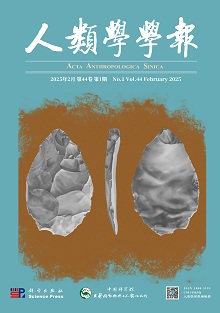The Taiziling locality (TZL), buried in the second terrace near the Prince Mausoleum of the Qing Dynasty is located in the Sungezhuang village, Jizhou County,Tianjin City, which was discovered in 2005 and excavated in October 2021, covering an area of 50 m2. In this excavation, over 100 artifacts were unearthed. The lithic assemblage includes cores, flakes, chunks, debris and tools, with the representative tool being scrapers, which is widely found in the remains of Palaeolithic sites in northern China. Five kinds of raw materials are identified in the lithic artifacts, which can be arranged according to their proportion as quartzite, quartz, flint, crystal and andesite. A large number of quartzite can be easily obtained from Huanghua Mountain, which is about 200 meters to the north of the locality, with highest proportion in the raw materials for stone artifacts, showing that ancient humans who lived in TZL locality at that time adapted measures to local conditions and materials when making tools. The blanks of stone tools are mostly flakes, and individually blocks. The tools are modified mostly from dorsal surface, with the modified parts being concentrated on the side edges. As shown by the characteristics of the cores and flakes from TZL locality, two distinct technological assemblages are identified. One is flake technology, which is the local and dominant technological assemblage in North China, characterized by free-hand core reduction without preparation and simple tool modification. The other is microblade technology, which is represented by microblade cores with working surfaces for the production of micro-blade. Although only one microblade core was found at the locality, it was so highly utilized that it was nearing the abandonment stage, which reflects the fact that flint was very valuable to ancient humans. Judging from the stratigraphy and the assemblage of stone artifacts, the TZL locality belongs to the Middle and Upper Paleolithic. In addition, a stone tool with polished marks which unearthed in the 6th culture layer, provides an extremely important clue for the study of same type of stone tools in East Asia, showing the close connection between northern China and Eurasia during that period. The TZL locality owns high value in the study of lithic technology in the Late Pleistocene of North China as well as the cultural relationship between northern and northeastern China during the period.









